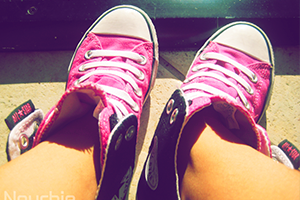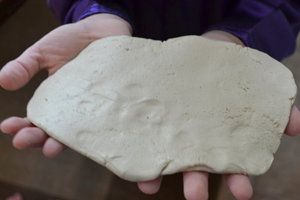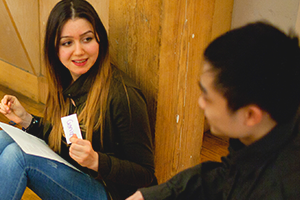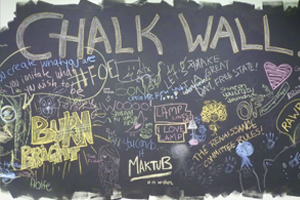Who says that going back to school can’t be a blast? Check out how Facing History and Ourselves educators from around the globe bring a bit of fun into the first few days of class.
Whether your school has already started, or you’re getting ready to head back to the classroom, these tips and strategies will get your students ready to learn.
1. Strategy: Big Shoes to Fill
On the first day of class, hand out cutouts of footprints to each student – a pair, so they have a left foot and a right. And then ask two questions: If your shoes could talk, what story would they tell of a way in which you have walked with justice? And, In whose footsteps are you following and why? This is a good activity for classrooms or for advisory groups. When the students think about their answers, they’re wrestling with their own personal histories. They’re thinking about their identities and the choices they’ve made. Have students write their answers on the cutouts and then share, as a group or class. Afterward, you can hang the cutouts up around the room. It is like a living gallery walk of the classroom’s history.
This tip comes from Julian Hipkins, 11th-grade United States history teacher at Capital City Public Charter School in Washington, D.C. He found this back-to-school strategy from the Philadelphia Folklore Project. Check out another Gallery Walk teaching strategy.
2. Do It: Read, Think, Write, SpeakTo get students ready to think and talk about identity and belonging, literature teacher Jackie Fishman does this Read, Think, Write, Speak activity at the beginning of the year. She hands out editorials from newspapers, asks students to read them, and then consider these questions: Who is the writer? What is the issue being addressed? What is the writer’s opinion? Do you agree or disagree with the opinion? What does this issue have to do with you? Then students write down their answers and present to the class. “Part of my job is showing my students that they have a voice,” she says. “I tell them, ‘Once you’re informed about something, your voice needs to be part of the solution.’”
Jackie Fishman teaches 11th-grade American Literature at the Charlotte Latin School, an independent school in Charlotte, North Carolina. Discover other literature resources here.
3. Hands On: Actively Exploring Identity and DifferenceGetting students to do something hands-on at the beginning of the year can help calm jitters and break the ice. Hand out clay and ask students to make a sculpture that represents who they are now. It’s a challenge! How do they do that without using any words? Follow up the hands-on time with discussion: Have students pair off and use words to explain their sculpture. Suggested prompt questions: What are the parts of your identity, your past experiences that you chose to bring into your sculpture? Were there things you left out? Optional next round: Have students make a second sculpture that represents where they’d like to be in a year. Return to pairs or small groups to talk about the differences (if there are any) between the two sculptures. The real zinger question comes at the end: What do you need to do to get there?
This strategy comes from Sean Pettis, project coordinator for the Facing our History, Shaping the Future project in Northern Ireland, a collaboration between Facing History and the Corrymeela Community.
4. Ask It: What’s in a Name?On the first day of school, kick things off with an activity called What’s In a Name? Have students pair up and interview each other about their names – full names, or just first, just middle, just last. Rather than simply swapping names or creating name tags, the activity allows students to think about the story behind their name. When the students reconvene, have one student from each pair introduce their partner to the group. This activity opens up various stories from different cultures and it is a great way to get students into the mindset of being attentive. When the students hear other people tell their stories, they say, Wait a minute. How did I get my name? This is one way to open their eyes to their own history.
This activity comes from Terry Fostvedt, 11th- and 12th-grade language arts teacher at Centaurus High School in Lafayette, Colorado. Another take on identity activities: Construct a Biopoem, connect identity and poetry.
5. Make It: Turn a Wall Into a BlackboardUsing blackboard paint, turn a wall in your classroom into a blackboard. It’s a great way for teachers to get to know a class, for students to get to know each other, and for young people to get to know educators. Suggestions for filling the space: Pose a question to the students on the first day and have each student take up a bit of the wall writing their personal responses. Write quotes that are meaningful to you and the work you will be doing throughout the semester. Ask students to use a bit of the board to show off a talent – drawing, writing a phrase in another language, doing a math problem. Change it up each month – keep the wall alive over the course of the school year. You can take photographs of it each month and then at the end of the year, you and the students can see the ways your own thoughts and ideas have grown.
This idea comes from Facing History Co-Founder and Klarman Family Executive Director Margot Stern Strom. This is a photo of her own blackboard wall, from her office at Facing History headquarters in Brookline, Massachusetts!






